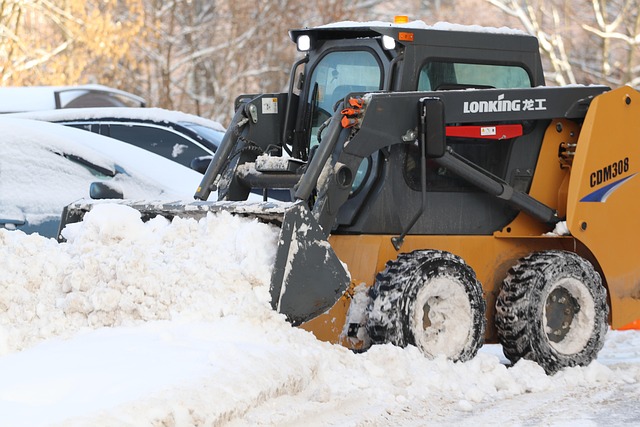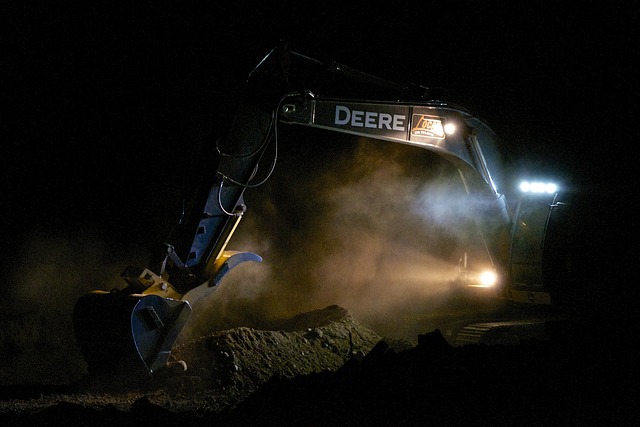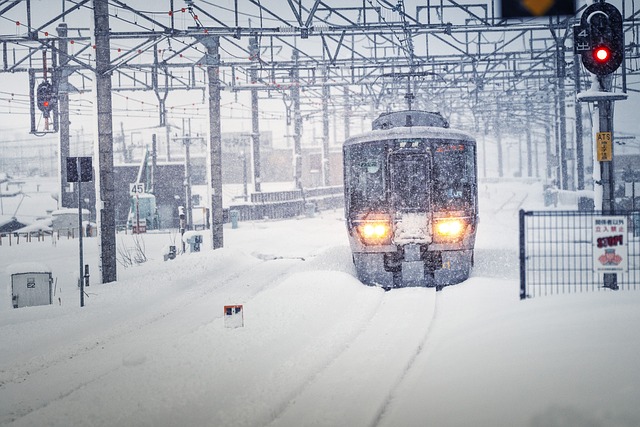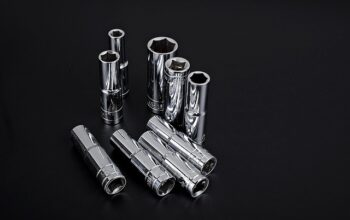Commercial snow plowing operations face significant risks, including slippery roads, heavy machinery, and sudden weather changes. To mitigate these dangers, prioritize safety through comprehensive employee training, regular equipment maintenance, risk assessments, clear communication, and adherence to regulations. Essential safety gear for operators includes high-visibility clothing, protective gear, and advanced technology like GPS tracking and collision avoidance systems. These measures enhance worker safety, ensure efficient operations, and prioritize the well-being of both workers and road users in commercial snow plowing.
In the realm of commercial snow plowing, ensuring safety is paramount to prevent accidents and protect operators. This comprehensive guide delves into the critical aspects of safeguarding individuals involved in snow removal operations. From understanding inherent risks to implementing best practices, we explore essential gear, training requirements, and advanced technologies that mitigate dangers. By adhering to regulatory guidelines and adopting proactive measures, commercial snow plowing can be a safer, more efficient process.
- Understanding the Risks and Dangers of Commercial Snow Plowing
- Essential Safety Gear and Equipment for Plow Operators
- Best Practices for Safe Snow Removal Techniques
- Regulatory Compliance and Training Requirements
- Mitigating Hazards with Advanced Technology and Pre-Plow Preparation
Understanding the Risks and Dangers of Commercial Snow Plowing

Commercial snow plowing operations present unique risks and dangers that must be understood and mitigated to ensure the safety of workers and the public. One of the primary concerns is the potential for accidents due to slippery road surfaces, limited visibility, and heavy machinery. Operators and employees need comprehensive training on safe handling practices, emergency response procedures, and the proper use of equipment.
Additionally, weather conditions can rapidly change during snowstorms, increasing risks like hydroplaning, collisions, and injuries. Regular maintenance of plowing equipment is crucial to prevent mechanical failures. Managers should also implement clear communication protocols and conduct thorough risk assessments before each plowing shift to address potential hazards and ensure a safe work environment.
Essential Safety Gear and Equipment for Plow Operators

Plow operators in commercial snow plowing operations must be equipped with essential safety gear and equipment to mitigate risks and ensure their well-being. This includes high-visibility clothing, such as reflective vests and jackets, to enhance visibility on snowy roads. Gloves, warm winterized boots, and face masks are also crucial, protecting against cold temperatures and reducing the risk of respiratory issues caused by inhaling snow and ice.
Additionally, operators should be provided with robust safety helmets with face shields or balaclavas to shield them from flying debris, as well as ear protection to minimize noise exposure during prolonged plowing sessions. Reliable communication devices, such as walkie-talkies, are essential for maintaining constant contact with the team and receiving instructions promptly. Lastly, having access to emergency stop switches and proper training in their use is vital for quick response during unexpected situations.
Best Practices for Safe Snow Removal Techniques

When engaging in commercial snow plowing, adhering to best practices is paramount to ensure safety for both operations and individuals. Firstly, proper training is crucial. Employees must be adept at operating snow removal equipment, understanding its limitations, and mastering emergency handling procedures. Regular safety briefings and refresher courses can significantly mitigate risks.
Secondly, implementing strategic de-icing techniques enhances safety. Using environmentally friendly de-icers and applying them before snowfall reduces ice accumulation, making plowing more efficient and safer for both workers and road users. Additionally, maintaining clear communication among crews and with traffic control centers is vital to avoid collisions and ensure smooth operations during commercial snow plowing.
Regulatory Compliance and Training Requirements

In the realm of commercial snow plowing, regulatory compliance and comprehensive training are non-negotiable aspects that underscore safety measures. Before operating any snow removal equipment, it’s crucial for personnel to familiarize themselves with local, state, or national regulations pertaining to commercial snow plowing. These guidelines often include specific rules on vehicle maintenance, operator qualifications, and emergency response protocols.
Training requirements for commercial snow plowing operations should encompass a wide range of topics, such as safe operating procedures, hazard identification and mitigation, and the proper use of safety equipment. Additionally, regular refresher courses can ensure that employees stay current with evolving safety standards and best practices in the industry, fostering a culture of safety within the organization.
Mitigating Hazards with Advanced Technology and Pre-Plow Preparation

In the realm of commercial snow plowing, mitigating hazards is paramount for ensuring safe operations and preventing accidents. Advanced technology plays a crucial role in enhancing safety measures. For instance, GPS tracking systems and real-time weather sensors enable efficient route planning and adaptive plowing techniques, reducing the risk associated with icy road conditions. Additionally, integrating automated features like smart plow controls and collision avoidance systems can significantly decrease human error, making operations smoother and safer.
Pre-plow preparation is another critical aspect that cannot be overlooked. This involves regular maintenance of equipment to ensure optimal performance and safety. Prioritizing thorough deicing and snow removal before plowing helps prevent the buildup of ice and compacted snow, reducing the strain on machinery and minimizing potential hazards. Skilled operators who are well-trained in advanced plowing techniques and equipped with the right tools can effectively navigate challenging terrain and weather conditions, fostering a safer work environment in commercial snow plowing operations.




